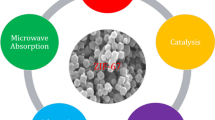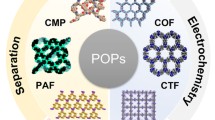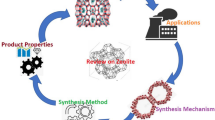Abstract
Chemical modification effect of acetic acid was examined to control the hydrolysis and following condensation reaction of zirconium alkoxide. When acetic acid was added to zirconium alkoxide solution, acetic acid coordinated to a zirconium alkoxide to form a stable bidentate chelating compound if molar ratio of acetic acid to zirconium alkoxide (here after abbreviated as RA) was less than two. In the case of simultaneous addition of acetic acid and water into a zirconium alkoxide solution, acetic acid immediately reacted with alkoxide. Water reacted with residual functional alkoxy groups to proceed the following condensation. Changing the degree of chelating the acetic acid to a zirconium alkoxide led to the control of the hydrolysis and condensation by decreasing the alkoxy groups of zirconium alkoxide. Polymeric transparent monolithic gels could be successfully prepared in the range from RA = 1 to RA = 1.5, and from RW = 1 to RW = 1.5 (here RW means molar ratio of water to zirconium alkoxide), respectively.
Similar content being viewed by others
References
B. Fegley and E.A. Barringer, in Better Ceramics Through Chemistry, edited by C.J. Brinker, D.E. Clark, and D.R. Ulrich (Elsevier, New York, 1984), pp. 187–197.
B. Fegley, P. White, and H.K. Bowen, Am. Ceram. Soc. Bull. 64, 1115–1119 (1985).
K. Uchiyama, T. Ogihara, T. Ikemoto, N. Mizutani, and M. Kato, J. Mater. Sci. 22, 4343–4347 (1987).
M. Nogami and Y. Moriya, J. Non-Cryst. Solids 37, 191–201 (1980).
K. Kamiya and T. Hashimoto, J. Mater. Sci. Lett. 9, 1341–1344 (1990).
B. Karmaker, G.D.D. Kundu, and D. Ganguli, J. Non-Cryst. Solids 135, 29–36 (1991).
H. Saito, H. Suzuki, and H. Hayashi, J. Chem. Soc. Jpn. 1571–1578 (1988).
H. Suzuki, H. Saito, and H. Hayashi, Better Ceramics Through Chemistry V, edited by M.J. Hampeden-Smith, W.G. Klemperer, and C.J. Brinker (MRS, Pennsylvania, 1992), pp. 83–88.
H. Hayashi, H. Suzuki, and H. Saito, J. Ceram. Soc. Jpn. 100, 122–127 (1992).
C. Sanchez, J. Livage, M. Henry, and F. Balonneau, J. Non-Cryst. Solids 100, 65–76 (1988).
G. Yi and M. Sayer, J. Sol-Gel Sci. Tech. 6, 65–74 (1996).
G. Yi and M. Sayer, J. Sol-Gel Sci. Tech. 6, 75–82 (1996).
D.C. Bradley, R.C. Mehotra, and D.P. Gaur, Metal Alkoxides (Academic Press, New York, 1978).
N.W. Alcock, V.M. Tracy, and T.C. Waddington, J. Chem. Soc. Dalton, 2243 (1976).
Von K.H. Thiele and M. Pause, Z. Anorg, Allg. Chem. 441, 23 (1978).
K. Nakamoto, Infrared and Raman Spectra of Inorganic and Coordination Compounds (John Wiley & Sons, New York, 1963).
K.S. Mazdiyasni, C.T. Lynch, and J.S. Smith, J. Am. Ceram. Soc. 48, 372–375 (1965).
J.C. Debsikdar, J. Non-Cryst. Solids 86, 231–240 (1986).
D. Kundu and D. Ganguli, J. Mat. Sci. Lett. 5, 293–295 (1986).
P. Papet, N. Lebars, J.F. Baumard, A. Lecomte, and A. Dauger, J. Mat. Sci. 24, 3850–3854 (1989).
Author information
Authors and Affiliations
Rights and permissions
About this article
Cite this article
Hayashi, H., Suzuki, H. & Kaneko, S. Effect of Chemical Modification on Hydrolysis and Condensation Reaction of Zirconium Alkoxide. Journal of Sol-Gel Science and Technology 12, 87–94 (1998). https://doi.org/10.1023/A:1008661227954
Issue Date:
DOI: https://doi.org/10.1023/A:1008661227954




